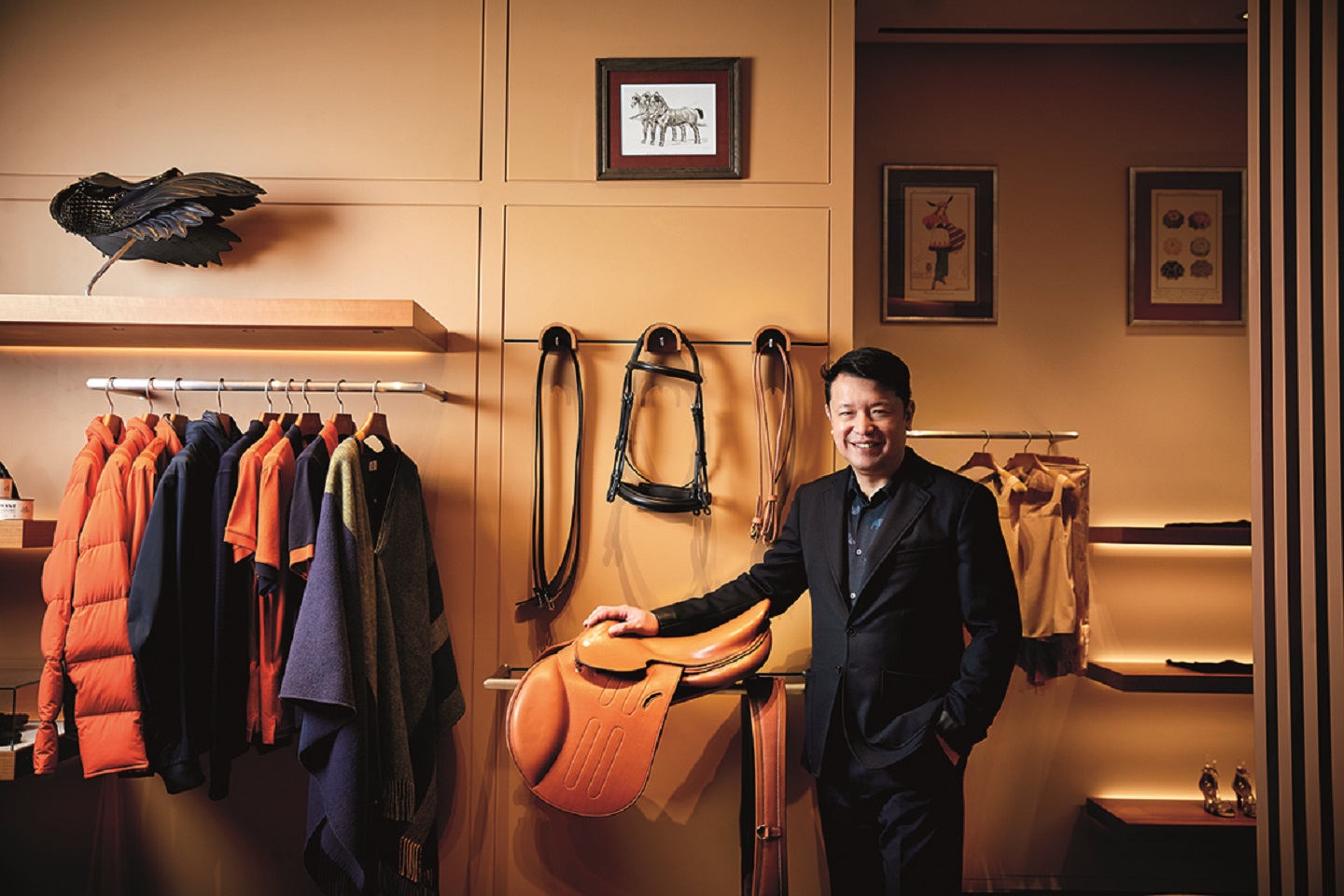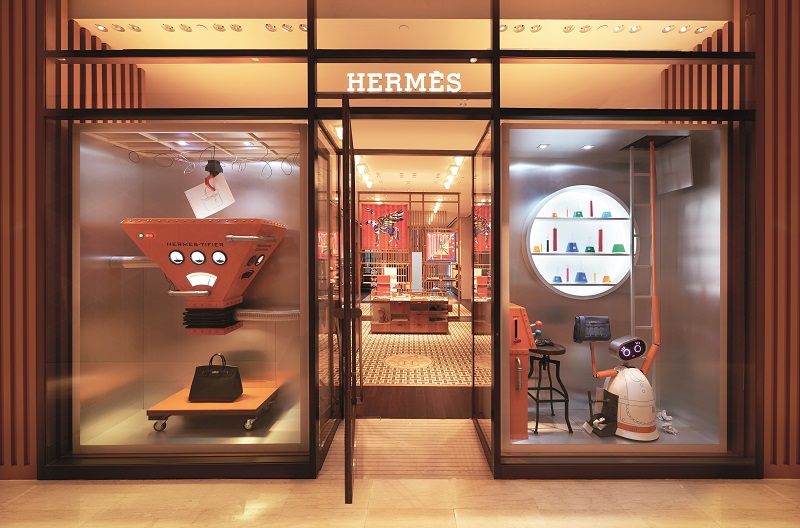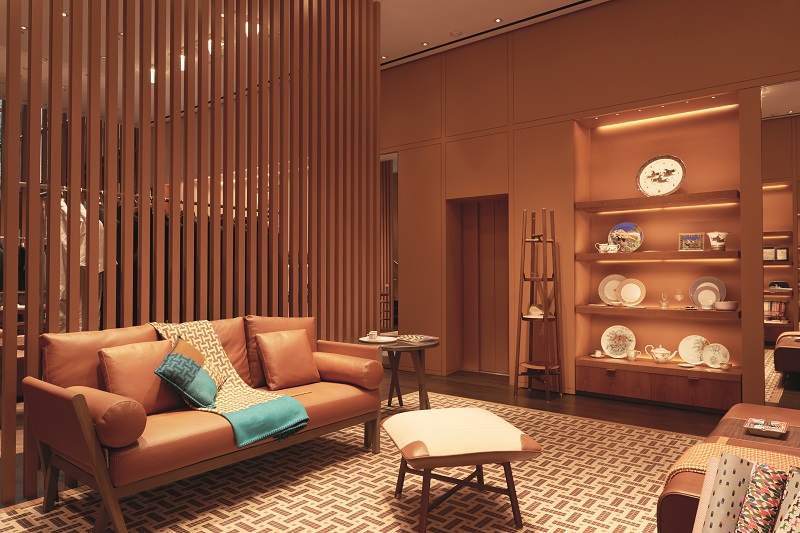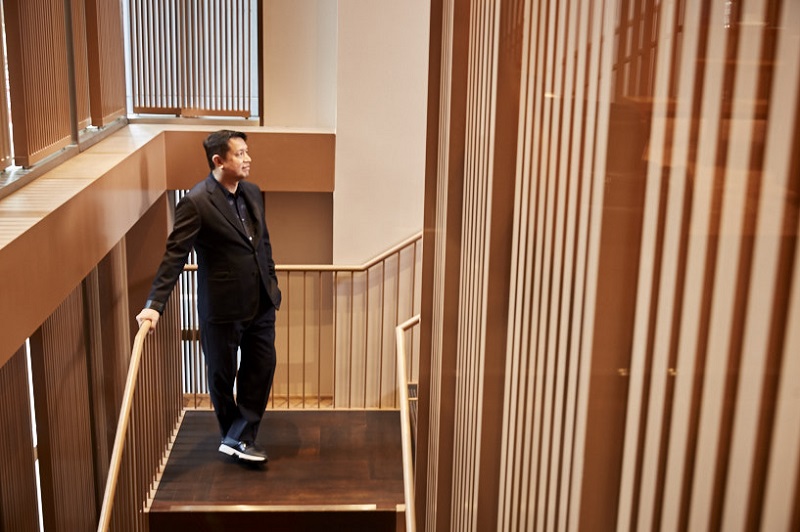
(Photography by SooPhye)
After a six-month refurbishment which included recalibrating its interior design and layout — though its location and total retail space of 254 sq m remain unchanged — the double-storey Hermès store at Pavilion KL certainly boasts a brand-new look and feel. The French luxury brand made its Malaysian debut in Suria KLCC in 1998, before launching its second boutique in Pavilion KL 10 years later. Finally, two years ago, its third store at The Gardens Mall was completed in two stages. “Over the years, we have had to invest substantially to ensure that we are, first, a local store for Malaysians before anything else,” says Hermès Malaysia managing director Alvin De Souza at the store reopening.
Over the past two decades here, the family-owned Parisian maison has continued to evolve in sharing its values, which are entrenched in highly precise and skilled crafts, the finest materials, and beautiful and timeless objects that encompass the spirit of constant innovation. With the latest development of its Pavilion KL retail space, a major shuffle of where to showcase the works of all the different métiers provided the rationale for the store’s renovation. “It was time to renovate and extend the store, so as to offer our clients the ultimate experience,” says De Souza.
“Alison [Lee, Hermès Malaysia country manager] and I sat down to write down everything that we liked and disliked about the old store and what we wished for the new store,” says De Souza, sporting an understated style in a dark, well-cut suit. “We presented it to architectural agency RDAI under the artistic direction of Denis Montel, which became the starting point for our design brief. An important part of the brief was how to metamorphosise the store.”
One of the biggest visual differences that sets the new store apart from the old one is the colour palette, he says. Where it was grey-tinged, cold and dark with limestone flooring previously, it is now warm-hued and bright, lit with LEDs and complemented with flooring comprising a mix of mosaic, super plush carpeting and dark wood.

As a heritage maison, Hermès is truly unique as a brand with no less than 16 métiers. “We are legitimate in everything we do. In fact, we are making the items and not just selling them,” says De Souza. “An Hermès store is very special because we have different offerings. And for us, no matter how small a store may be, like some of our airport stores, we strive to represent the entire offerings of the Hermès métiers in them. We try not to remove anything as it defeats the purpose of calling ourselves this unique brand with so many métiers.”
With the new spacious layout of the Hermès Pavilion KL store, the richness of all its 16 métiers is certainly optimised, especially with an area dedicated to the home universe for the first time. Upon entering the main entrance, visitors are welcomed by the house’s signature ex-libris set on a “Faubourg” pattern stoneware mosaic floor, contrasting with the deep-brown teak floor that evokes traditional Malaysian flooring.
To the left of the entrance, a large space dedicated to women’s silk, and on the right, fashion jewellery and accessories, and perfume, instantly introduce visitors to Hermès’ craftsmanship and its exceptional know-how. “The new display concept accommodates scarves of different shapes and sizes, like the 90 by 90cm and 140 by 140cm squares, plus all the hanging scarves that offer a better showcase of the silk collection,” De Souza says.
One of the most striking design features of the store is the impressive glass-back façade on both levels, bathing it in natural light. To create a diffused effect, lacquered-metal square claustra — acting as a filter and extending from floor to ceiling — have been positioned to cast shadow effects throughout the space to break up and punctuate different sections.
“This helps to remove the long and narrow feeling of the old store. It looks more inviting and somewhat like a home now,” says De Souza. “It is interesting that with this being a modern building, there are very few pillars, so there is no excuse of having to hide pillars or create walls when you design. There is also a variation in ceiling heights [in the renovated store], which is nice.”
As customers proceed towards the back of the first level, the men’s ready-to-wear, masculine silk and home collections invite them to continue on the journey of discovering these métiers. “Furniture now has a presence in the store. Before we officially launched furniture, we called the department Art de Vivre (the art of living), which included home décor, children’s items, blankets, shawls, towels and furniture,” De Souza explains, disclosing that Hermès has been strengthening its position as a player in furniture by presenting its homeware collections at the Milan International Furniture Fair since 2011.

At the rear of the ground floor, a backlit staircase in front of the vast glass wall leads visitors to the second level. On this floor, the coveted leather goods section holds court, surrounded by the equestrian collection, women’s ready-to-wear and the extensive jewellery and watch departments.
“Leather and silk are our biggest draws,” De Souza says. “The leather display concept at the store is a new one for Hermès. Singapore’s Hermès Takashimaya store was the first in the world to have it. It’s an evolution of an existing display and in time, all the new stores will have it.”
Providing further convenience, a lift has been added in the Hermès Pavilion KL store. “There was a need for a lift as customers would often ask us to bring products downstairs or upstairs within the scheme of a duplex store like this one,” De Souza says. “It is also a wheelchair-friendly feature that certain customers will definitely appreciate.”
With more customers asking for greater privacy to ensure their purchases remain confidential, the comfortable, private VIP space at the back of the second level — a few metres from the top of the stairs connecting the first and second levels — was born.
“Customer privacy is very important, for example, when a female customer would not like to reveal how she looks in a brand-new outfit before a particular event. The VIP room is really for this purpose and once the door is closed, it is entirely soundproof and sales personnel can engage privately with the clients,” says De Souza.
Besides creating a space to perfectly showcase all its métiers’ works, and not just a selection of the most popular offerings, the new flagship’s retail design serves to reduce the intimidation and minimise the distance between the products and customers that an ultra-luxury store such as Hermès can have. The glass cabinets that used to display all leather items have been replaced with more open shelves to encourage customers to feel the leather of Hermès’ sought-after handbags and not just feast their eyes on them, says De Souza.
He reveals that the higher counters positioned next to the leather goods and fashion accessories sections also facilitate browsing, allowing customers to easily examine items that catch their fancy. “By adding these counters, customers are encouraged to try the products without being intimidated,” De Souza says.
Business-wise, Hermès’ growth trajectory has made it an incredible success in the world of luxury. “I would say that our strategy has been fairly consistent all these years,” says De Souza. “We believe that dynamic growth should come from all categories and not be dependent on one or two.”

Chiming in, Hermès Middle East and South Asia managing director Éric Festy, who was also at the store reopening, mentions that scarves represented half of the business when he joined in 1993. Today, silk accounts for less than 10% while revenue for leather has escalated from 10% into a major income contributor. This, to him, shows that the future is never certain with regard to the ebb and flow of demand for luxury items.
Festy, who flew into Kuala Lumpur from Singapore together with De Souza for the reopening of Hermès Pavilion KL says, “The key word is diversification. Going back to the 1980s, former president Jean-Louis Dumas understood this and steered the brand to sustainability by having diversification in terms of products, countries and geography. At the end of the day, one of the reasons for our success is the understanding of the necessity for diversification many years ago.”
So, how does Hermès, as the arbiter of luxury, view luxury? De Souza describes luxury as “what you buy to please yourself and not anyone else” and it comes without logos and is not based on what others think. “I would like to highlight ‘inside-out’ or the idea that the pleasure derived from an Hermès object is only known to the user or wearer, like [the feel of] the luxurious leather lining of a bag or a silk tie whose lining is made from the same piece of silk as its exterior,” he says.
At the end of the day, one of the reasons for our success is the understanding of the necessity for diversification many years ago
Festy equates luxury to the relationship we have with time. According to him, real luxury is the capacity we have to master time, as the French put it: Le temps fait bien les choses (time makes good things). He cites the example of how it takes one Hermès artisan 14 hours to make the Kelly bag, rather than three hours on a production line.
“In a world where everybody is rushing because of how fast everything is moving due to the digital era, Hermès can afford to take its time to do what it wants to do, which is making quality and beautiful objects. That is real luxury,” says Festy.
In response, De Souza adds that although Hermès possesses a façade of luxury, the people he works with in the company are very different: They are very close and listen to one another. “The fact that I could put together the design brief with Alison to draw up the new store is unique. We actually have a say as to where each métier should be located and how much display storage space is to be allocated to each métier,” he says.
Lee concurs that working at Hermès is like working with family, to which Festy adds: “We want to be light, and not serious and heavy. At the end of the day, why do people stay so long in this company? Because they have pleasure and satisfaction in working for a company where meaning is derived from a certain emotion and dream.”
To round up what the stalwart brand embodies, De Souza concludes that Hermès is amazing as a storyteller. “We have a lot of interesting and heart-warming stories to tell about our products. That is what makes us very special.”
From the memorable tales that De Souza, and also Festy and Lee (who spontaneously joined us at the end of the interview) regaled me with, it is evident that as a house of quality and luxury, Hermès is also a marvellous creator of the most desirable objects, imbued with wondrous narratives that truly enrich and inspire.
This cover story appeared in the Jan 1, 2018 issue of The Edge Malaysia. Save by subscribing to us for your print and/or digital copy.


